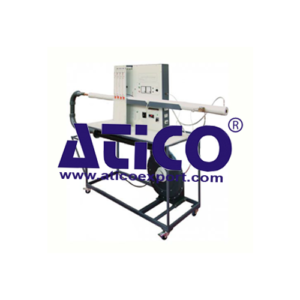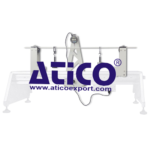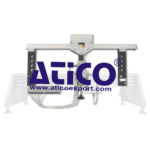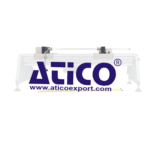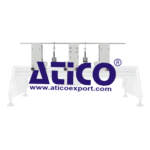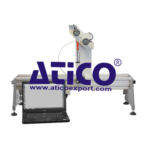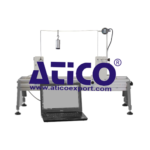Description
A basic knowledge of forced convection heat transfer theory is valuable in many engineering fi elds, especially heat-exchanger design. Forced Convection Heat Transfer apparatus allows students to examine the theory and associated formulae related to forced convection in pipes. It is a frame holding a motor-driven fan, piping and instrumentation panel. It also has a large work surface for student convenience. The fan runs at a constant speed and draws air through a control valve. The air then moves into a u-shaped pipe. An orifi ce plate in the pipe connects to a manometer on the instrumentation panel to measure the airfl ow rate. A larger manometer on the instrument panel measures the fan pressure drop. The u-shaped pipe connects to a smaller diameter insulated and electrically heated copper ‘test pipe’. Students control the power input to the test pipe heater using a variable transformer, while noting the power using instrumentation on the panel. The test pipe discharges to atmosphere. Pressure tappings each end of the test pipe connect to a manometer on the instrument panel to measure test length pressure drop. A thermometer measures the air temperature at the inlet to the test pipe. Thermocouples measure the temperature at various points along the test pipe wall. Further thermocouples measure temperature at various points within the test pipe insulation. Students use a digital indicator on the instrumentation panel to display thermocouple temperature readings.
Learning outcomes
Derivation of the value of Nusselt number (Nu) and comparison with empirical formula
Calculation of the local heat transfer coefficient (h)
Determination of the Stanton number (St)
Calculation of the friction factor (f) and comparison with experimental value
Determination of the validity of the Reynolds analogy for air
Specifications
ATICO is committed to a programme of continuous improvement; hence we reserve the right to alter the design and product specification without prior notice.
Nett dimensions and weight:
3500 mm x 850 mm x 2020 mm and 344 kg
Packed dimensions and weight:
3.55 m3 and 522 kg
Test pipe length :
Approximately 1.75 m
Test pipe diameter :
32.6 mm
Operating Conditions
Operating environment:
Laboratory
Storage temprature range :
–25°C to +55°C (when packed for transport)
Operating temprature range :
+5°C to +40°C
Operating relative humidity range :
80% at temperatures < 31°C decreasing linearly to 50% at 40°C
